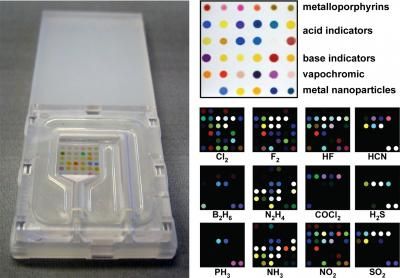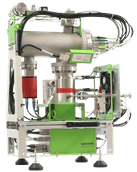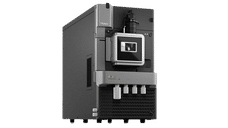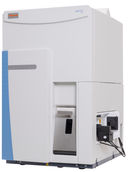Interdisciplinary research team developing novel drug detection technology
New system uses software that acts like a robotic scientist
Every time a person snorts cocaine, it doesn't just go to his or her head: It also provokes a response in the immune system, creating special biomolecules that may serve as a permanent record of each exposure. With the support of a $2.7 million Recovery Act grant from the National Institute of drug abuse (NIDA) an interdisciplinary team headed by Vanderbilt chemist John McLean and physicist John Wikswo will attempt to determine whether an individual's white blood cells retain chemical memories of exposure to drugs like cocaine and alcohol that can be read reliably and unambiguously.
The capability to characterize an individual's history of drug abuse should allow physicians to tailor treatment strategies on a case-by-case basis and the technology could provide new insights into the biological pathways that control addictive behavior, which is a first step toward identifying effective new treatments. If successful, it might also provide the basis for a new technology for drug testing that could be more difficult to beat or evade than current tests that detect the presence of specific drugs or their metabolites in the body.
McLean, Wikswo and their collaborators at Vanderbilt, Cornell, Duke and NIDA will be using an experimental platform specifically designed to characterize millions of biomolecules and search them for various signatures. In this case, they will be analyzing a large suite of biological signaling and metabolic molecules in search of signatures that correspond to past exposures to cocaine, alcohol and other drugs of abuse.
"In essence, we are hitting these cells with a hammer to hear how they ring and to determine if those that have been exposed to a drug ring differently," said Wikswo, the Gordon A. Cain University Professor.
The new platform has a number of other potential applications. The researchers have also received a $1.5 million grant from the Defense Threat Reduction Agency to search for signatures of biological warfare agents that could be built into field detectors. In addition, the researchers propose using it to analyze biopsy material from cancer patients to identify the most effective chemotherapy agent for each individual.
"With this system we are not limited to one type of molecule," said McLean, an assistant professor of chemistry and expert on ion mass spectrometry. "We can look at all the biomolecules that are consumed or secreted by the cells – nucleic acids, proteins, fats and sugars – and this will give us a comprehensive view of how the cells are responding."
In order to achieve these ambitious goals, the researchers are constructing a new class of instrument that acts as a robot scientist that can rapidly run thousands of virtual experiments and hundreds of actual experiments per day without human intervention. The brain of the system is a self-learning software program developed by Hod Lipson, associate professor of computer science at Cornell University. His program will directly control the instrument, which consists of a robot-controlled microfluidics chamber, an automated fluorescent microscope and a device called an ion mobility mass spectrometer that can identify millions of biomolecules at one time.
White blood cells obtained with a pinprick are placed in the microfluidic chamber, which can keep them alive and healthy for a period of several days. The chamber is connected to an automated chemical mixer that can be stocked with hundreds of different compounds. This allows the computer to expose the cells to a wide range of different environmental conditions and drugs. The chamber is monitored by the automated fluorescent microscope, which keeps track of the process and makes some key measurements. The small volume of the chamber holds the cells in place and does not dilute their cell's secretions, allowing the system to rapidly detect changes that are taking place. A tiny tube delivers the cell's secretions to the guts of the system, the ion mobility mass spectrometer.
The spectrometer has two stages. The first is a cylinder that generates a uniform electrical force and is filled with inert gas. When the biomolecules enter this chamber, those with smaller surface areas travel faster than those with larger areas. After the molecules reach the end of this chamber they are sprayed into a larger cylinder where an electrical field briefly accelerates smaller molecules to higher speeds than heavier ones. These molecules then travel down an evacuated tube where they hit a detector. By precisely recording the time when each molecule strikes the detector, the instrument independently determines each particle's surface area, mass and charge. This allows the instrument to identify millions of biomolecules at a time.
All this data is transmitted to the software program for analysis. The program compares the results with those of the millions of simulations it made during the two minutes that it takes to get the wet-lab measurements and, based on this comparison, decides what changes to make to enhance the signature. It then makes these changes, such as increasing the cell's cocaine exposure or reducing the pH, and then starts the next run. Using machine-learning algorithms, it continually refines its internal model of the process it has been asked to analyze.
These products might interest you
See the theme worlds for related content
Topic World Mass Spectrometry
Mass spectrometry enables us to detect and identify molecules and reveal their structure. Whether in chemistry, biochemistry or forensics - mass spectrometry opens up unexpected insights into the composition of our world. Immerse yourself in the fascinating world of mass spectrometry!

Topic World Mass Spectrometry
Mass spectrometry enables us to detect and identify molecules and reveal their structure. Whether in chemistry, biochemistry or forensics - mass spectrometry opens up unexpected insights into the composition of our world. Immerse yourself in the fascinating world of mass spectrometry!



































































